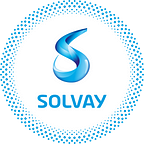The quantum mechanics in your TV screen
We make phosphine derivatives for a wide range of applications. Some of the newest and slickest of these are for the production of the quantum dots that equip the latest generation of high definition television displays.
You’ve probably heard of Quantum Dot TVs — they’ve only been on the market for a few years, but they are all the rage when it comes to the most vivid colors and the brightest display. What you might not know is that they rely on nanocrystals and phosphorus chemistry to function.
Hot solvents for bright colors
A quantum dot is a roughly spherical nanocrystal (only 10 to 15 atoms in diameter!) acting as a semiconductor. When used in TV displays, it can act as an optical tuner that converts the color of the light emitted by modifying the light’s wavelength. This is due to the quantum dot’s quantum mechanical properties, which give the object its name. In a nutshell, increasingly larger dots will change light from blue to red along the spectrum. In a Quantum Dot TV, the dots are placed in front of a blue LED light and modify the colors in order to create an image. “Such precision allows a wider spectrum of color than any other type of display,” explains Jeffrey Kolpa, Global Marketing Director at the Phosphorus Specialties business line of Solvay’s Technology Solutions global business unit.
Okay…but…
…what does all this have to do with phosphorus, the highly reactive and fairly common chemical element that can be found in everything from natural rocks to DNA to fertilizers? Well, as you can easily imagine, the manufacturing process for quantum dots is quite complex. They are made by combining semiconductor precursors, solvents and surfactants together at high temperature — and that generally cannot be done without using phosphorus-based, high-boiling solvents such as trioctylphosphine (TOP). Other phosphorus derivatives also serve as ligands that bind strongly to the nanoparticles within the quantum dot. Lastly, they ‘act as the ‘P’ source for indium phosphide based QDs’.
As most quantum dots in the market involve phosphorus, we’re investing to increase production of these phosphine derivatives.
Jeffrey Kolpa, Global Marketing Director, Phosphorus Specialties, Technology Solutions, Solvay
Small dots, big market
As the descendant of Albright & Wilson, a British company that started producing phosphorus in the 1850s (long before it became a part of Solvay), Phosphorus Specialties has a deep understanding of the chemistry of this particular element, serving niche applications such as post-harvest fumigation or biocides for the oil & gas industry. So when electronics manufacturers first developed quantum dot displays in the early 2000s and needed the phosphine compounds to build them, they naturally turned to Solvay’s Phosphorus Specialties group.
Solvay’s CYTOP® family comprises a wide range of phosphine derivatives owing its name to the chemistry behind them. In the television display space, CYTOP® 380HP and CYTOP® 250 are two key products used to commercially make quantum dots, the former as a solvent and ligand, the latter as the very core of the dot. These liquids play a significant role in the formation of the nanocrystals. Solvay sells its CYTOP® products to quantum dot manufacturers, who sell the quantum dots often on a film to display manufacturers, who in turn sell the displays to electronics manufacturers.
One of the first devices to feature a quantum dot display was Amazon’s Kindle Fire, released in 2011. Today, quantum dots are being explored for a series of other applications, from biological imaging to solar cells, lasers and light sensors. Within the last few years, Quantum Dot TVs have emerged on the market as one of the two most premium displays available, along with OLED, a more expensive technology, though with the advantage of displaying deeper blacks.
“The future is bright for Quantum Dot TVs and Solvay’s Phosphorus Specialties!” says Jeffrey.
